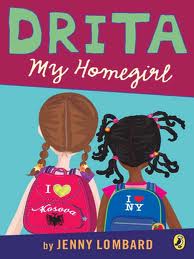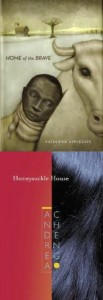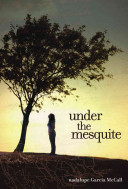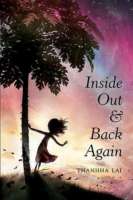By Andrea García, Hofstra University
 One of the graduate courses I teach in Literacy Studies is an introductory course in bilingualism and biliteracy for teachers who are seeking certification as Literacy Specialist. While this course provides a broad overview of many aspects of language and literacy development in multilingual contexts, it also offers opportunities for in-service teachers to consider issues of cultural and linguistic identity, race, and power, as experienced by immigrant and transnational families.
One of the graduate courses I teach in Literacy Studies is an introductory course in bilingualism and biliteracy for teachers who are seeking certification as Literacy Specialist. While this course provides a broad overview of many aspects of language and literacy development in multilingual contexts, it also offers opportunities for in-service teachers to consider issues of cultural and linguistic identity, race, and power, as experienced by immigrant and transnational families.  In the past, I have made use of literature circles, where a small group of students reads one book from a list of selected recommendations. Each group meets as a small professional reading community to talk about the book, share connections, tensions, and identify any issues they would like to explore further as learners. Through these literature circles the teachers establish relationships among themselves as readers, and they also get to meet characters in books with life-stories that may be very different from their own. The books I use center on stories of immigration, acculturation, language, and culture from multiple vantage points. Some of the books I have used in the past include Home of the Brave by Katherine Applegate (2007), Drita, My Homegirl by Jenny Lombard (2006), and Honeysuckle House by Andrea Cheng (2004).
In the past, I have made use of literature circles, where a small group of students reads one book from a list of selected recommendations. Each group meets as a small professional reading community to talk about the book, share connections, tensions, and identify any issues they would like to explore further as learners. Through these literature circles the teachers establish relationships among themselves as readers, and they also get to meet characters in books with life-stories that may be very different from their own. The books I use center on stories of immigration, acculturation, language, and culture from multiple vantage points. Some of the books I have used in the past include Home of the Brave by Katherine Applegate (2007), Drita, My Homegirl by Jenny Lombard (2006), and Honeysuckle House by Andrea Cheng (2004).
However, the last time I taught the course, I decided to approach this learning engagement a little differently, and selected to used paired books to frame the literature conversations. Influenced by Kathy Short’s recommendation to “never read a book alone,” I had all the teachers in the class read the same two novels, Under the Mesquite by Guadalupe Garcia McCall (2011) and Inside Out and Back Again by Thanhha Lai (2011). Each of these books presents a different perspective on what it means to construct cultural and linguistic identities with multiple languages and multiple and often times, conflicting cultural allegiances.
 In Under the Mesquite, Garcia McCall narrates the story of Lupita, a Mexican American teenager growing up in a large family with strong cultural ties to their Mexican heritage. Written in free-verse, the story effortlessly takes the reader through the challenges of coming of age within a transnational family, facing illness, economic hardship, and discrimination. But Lupita, takes it all in, and learns to depend upon her family and her mentor in school to make it through. Set in a border town in Texas, this unforgettable story, in which Spanish words are expertly included as an essential element of the story, was recognized with the Pura Belpré Medal for narrative in 2012.
In Under the Mesquite, Garcia McCall narrates the story of Lupita, a Mexican American teenager growing up in a large family with strong cultural ties to their Mexican heritage. Written in free-verse, the story effortlessly takes the reader through the challenges of coming of age within a transnational family, facing illness, economic hardship, and discrimination. But Lupita, takes it all in, and learns to depend upon her family and her mentor in school to make it through. Set in a border town in Texas, this unforgettable story, in which Spanish words are expertly included as an essential element of the story, was recognized with the Pura Belpré Medal for narrative in 2012.
 Thanhha Lai’s award winner Inside Out and Back Again, is also written in free-verse, and it tells the story of Ha, a ten-year-old Vietnamese girl, who must leave Saigon with her family at the end of the Vietnam war, and find refuge in the United States, specifically, Alabama. This story is set up in the late 1970’s and it is inspired by Thanhha Lai’s own memories and experiences when fleeing Vietnam as a young girl. Winner of the 2012 National Book Award and a 2012 Newberry Honor book, Ha’s story is a poignant and inspiring story of immigration and survival, artistically written from a child’s perspective. As readers, we accompany Ha through a long a difficult escape on a boat with her mother and her brother, and we are then invited into their new world as immigrants in the United States, as the family comes to terms with their new surroundings and the economic, cultural, and linguistic realities that they must face.
Thanhha Lai’s award winner Inside Out and Back Again, is also written in free-verse, and it tells the story of Ha, a ten-year-old Vietnamese girl, who must leave Saigon with her family at the end of the Vietnam war, and find refuge in the United States, specifically, Alabama. This story is set up in the late 1970’s and it is inspired by Thanhha Lai’s own memories and experiences when fleeing Vietnam as a young girl. Winner of the 2012 National Book Award and a 2012 Newberry Honor book, Ha’s story is a poignant and inspiring story of immigration and survival, artistically written from a child’s perspective. As readers, we accompany Ha through a long a difficult escape on a boat with her mother and her brother, and we are then invited into their new world as immigrants in the United States, as the family comes to terms with their new surroundings and the economic, cultural, and linguistic realities that they must face.
Reading both books side by side with my students opened up a whole new set of issues and connections that would not have been possible if we had only experienced one of the books. We quickly made connections between the two strong female protagonists in the stories, who also had strong mother figures in their lives. We also spoke about the different ways each of them faced adversity and their unique ways for problem solving when having to make difficult decisions. Since each of the books selected provide very different perspectives of the immigration experience, and were set in very different historical contexts, we were able to discuss how issues of racism and discrimination may be different or may be similar in today’s contexts. Pairing books for this learning engagements allowed us to not only develop relationships as readers invested in a learning community, but we also found ourselves establishing relationships with characters across texts and strengthening our inter-textual connections with other books we had read in the past.
As we continue to think of building relationships with books and with readers this month, I leave you with the following questions:
- What books have your read together which have presented alterative perspectives for a particular issue or experience?
- What are your favorite paired books to share with your students or with your reader friends?
Journey through Worlds of Words during our open reading hours: Monday-Friday, 9 a.m. to 5 p.m. and Saturday, 9 a.m. to 1 p.m. To view our complete offerings of WOW Currents, please visit archival stream.
- Themes: Andrea García
- Descriptors: Books & Resources, Student Connections, WOW Currents
